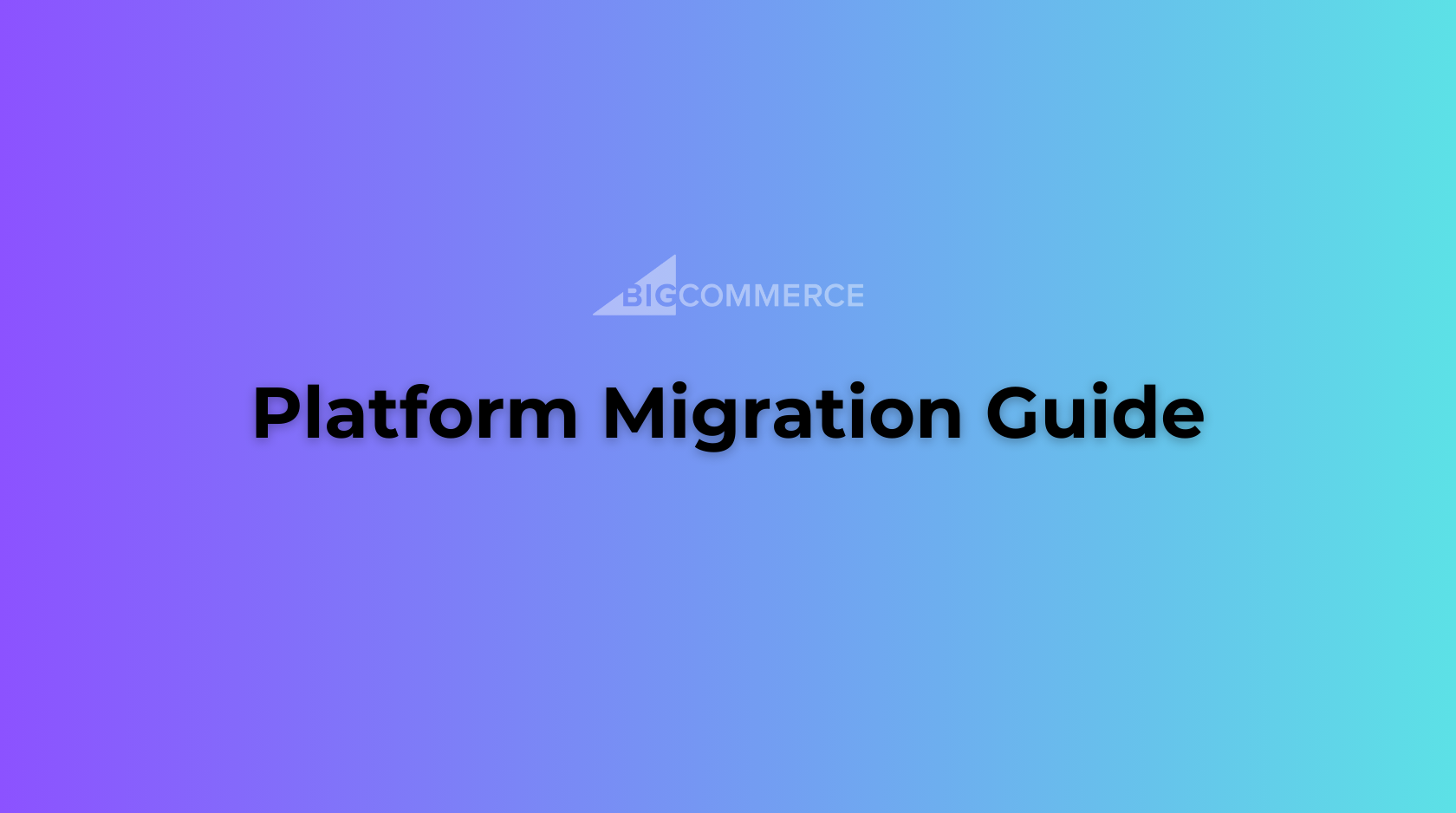In today’s rapidly evolving e-commerce landscape, businesses must be agile and forward-thinking. Legacy technologies and outdated e-commerce platforms can stifle innovation, slow down operations, and lead to subpar customer experiences. Migrating to a modern platform is a critical step to ensure your business stays competitive and capable of meeting future demands.
Introduction: The Need for Modernization
Replatforming is not merely an option; it’s a necessity for businesses aiming to stay relevant. The risks of sticking with an old platform include slower time to market, inefficiencies, scalability issues, slow page-load times, outdated website experiences, increased security threats, and poor customer experiences. This guide provides a roadmap for a smooth transition, leveraging BigCommerce’s expertise to help you build a modern, scalable, and high-performing e-commerce site.
Step 1: Establish a Launch Date and Timeline
A successful migration starts with setting a clear timeline. Whether driven by external deadlines like a platform’s end-of-life or internal goals such as fiscal targets, establishing a firm timeline is essential. This timeline should be the foundation for negotiations on project scope and priorities. Ensure that all stakeholders are aligned on this timeline to avoid last-minute surprises and rushed implementations.
- Setting a Realistic Timeline: Determine a launch date based on critical business cycles, such as avoiding peak seasons. Factor in time for unforeseen challenges, ensuring ample buffer periods.
- Aligning Stakeholders: Communicate the timeline to all involved parties, from executives to the implementation team. Regular updates and status meetings can keep everyone on track.
- Project Milestones: Break down the timeline into key milestones, such as completion of data migration, user acceptance testing (UAT), and final go-live preparations.
Step 2: Identify Key Goals and Set Expectations
Clearly define your migration goals and set realistic expectations with your team and stakeholders. What are the primary drivers for the migration? Are you seeking better performance, improved scalability, enhanced customer experiences, or more robust security features? Having well-defined goals helps in prioritizing tasks and making informed decisions throughout the migration process.
- Defining Objectives: Outline specific, measurable goals such as increasing site speed, improving mobile responsiveness, or expanding into new markets.
- Stakeholder Alignment: Ensure that all stakeholders understand and agree on the project goals. This alignment helps in maintaining focus and direction.
- Realistic Expectations: Set achievable targets for each phase of the migration. Managing expectations helps prevent scope creep and keeps the project within budget and timeline constraints.
Step 3: Create and Stack-Rank Your Requirements
Before selecting a new platform, it’s crucial to list and prioritize your requirements. This includes evaluating your product data, customer data, order history, and third-party integrations. Consider what functionalities are must-haves versus nice-to-haves. This clarity will guide your platform selection and ensure that the chosen solution aligns with your business needs and growth plans.
- Comprehensive Requirement Gathering: Involve various departments (e.g., marketing, IT, customer service) to gather a broad range of requirements.
- Prioritization: Rank the requirements based on their impact on business operations and customer experience. Focus on high-impact features first.
- Future-Proofing: Consider the scalability and flexibility of the platform to ensure it can support future business needs and technological advancements.
Step 4: Select Your Ecommerce Platform and Agency Partner
Choosing the right platform and implementation partner is pivotal. Look for platforms that offer flexibility, scalability, and robust API integrations. BigCommerce, for example, provides an open SaaS environment that supports extensive customization and seamless integration with various third-party tools. When selecting an agency partner, ensure they have a proven track record with your chosen platform and relevant industry experience. Trust and ease of communication with your partner are also key factors for a smooth transition.
- Platform Evaluation: Assess platforms based on criteria such as performance, scalability, security, and ease of integration. BigCommerce’s open SaaS model is a strong contender for businesses seeking customization and robust API support.
- Choosing an Agency: Select an agency with extensive experience in your industry and a deep understanding of the chosen platform. Look for testimonials, case studies, and client reviews to gauge their expertise and reliability.
- Communication and Collaboration: Establish clear communication channels and regular check-ins with your agency partner to ensure transparency and address any issues promptly.
Step 5: Begin Implementation
With a solid plan in place, it’s time to start the implementation. Effective project management is critical here. BigCommerce offers Implementation Project Managers who work closely with you to manage the entire project lifecycle, from planning to execution, to ensure on-time delivery and mitigate risks. Embrace an agile approach, with regular check-ins and adaptability to address any challenges that arise during the process.
- Project Kick-off: Begin with a detailed project plan outlining each phase, responsible parties, and expected outcomes. Kick-off meetings set the tone and align all parties on objectives and timelines.
- Data Migration: Carefully plan and execute data migration to ensure accuracy and integrity. This includes migrating product catalogs, customer information, and order histories.
- Custom Development: Develop custom functionalities and integrations as needed. Regular testing and validation are essential to ensure these customizations meet business requirements.
- User Acceptance Testing (UAT): Conduct thorough UAT to identify and fix any issues before going live. Involve end-users in testing to ensure the platform meets their needs and expectations.
- Go-live Preparation: Prepare for the go-live with a comprehensive checklist, including final data synchronization, performance testing, and contingency planning.
Step 5: Begin Implementation
Track key metrics like conversion rates, cart abandonment rates, ROI, and click-through rates to gauge the effectiveness of your retargeting campaigns. Use these insights to refine your strategy and optimize performance.
Conclusion
Replatforming is more than just updating your website; it’s about building a robust tech stack that can adapt to future changes. With economic uncertainties and shifting consumer behaviors, having a future-fit strategy is essential to maintaining competitiveness. By following this comprehensive guide and leveraging BigCommerce’s expertise, your business can achieve a seamless migration, leading to better performance, scalability, and innovation.
